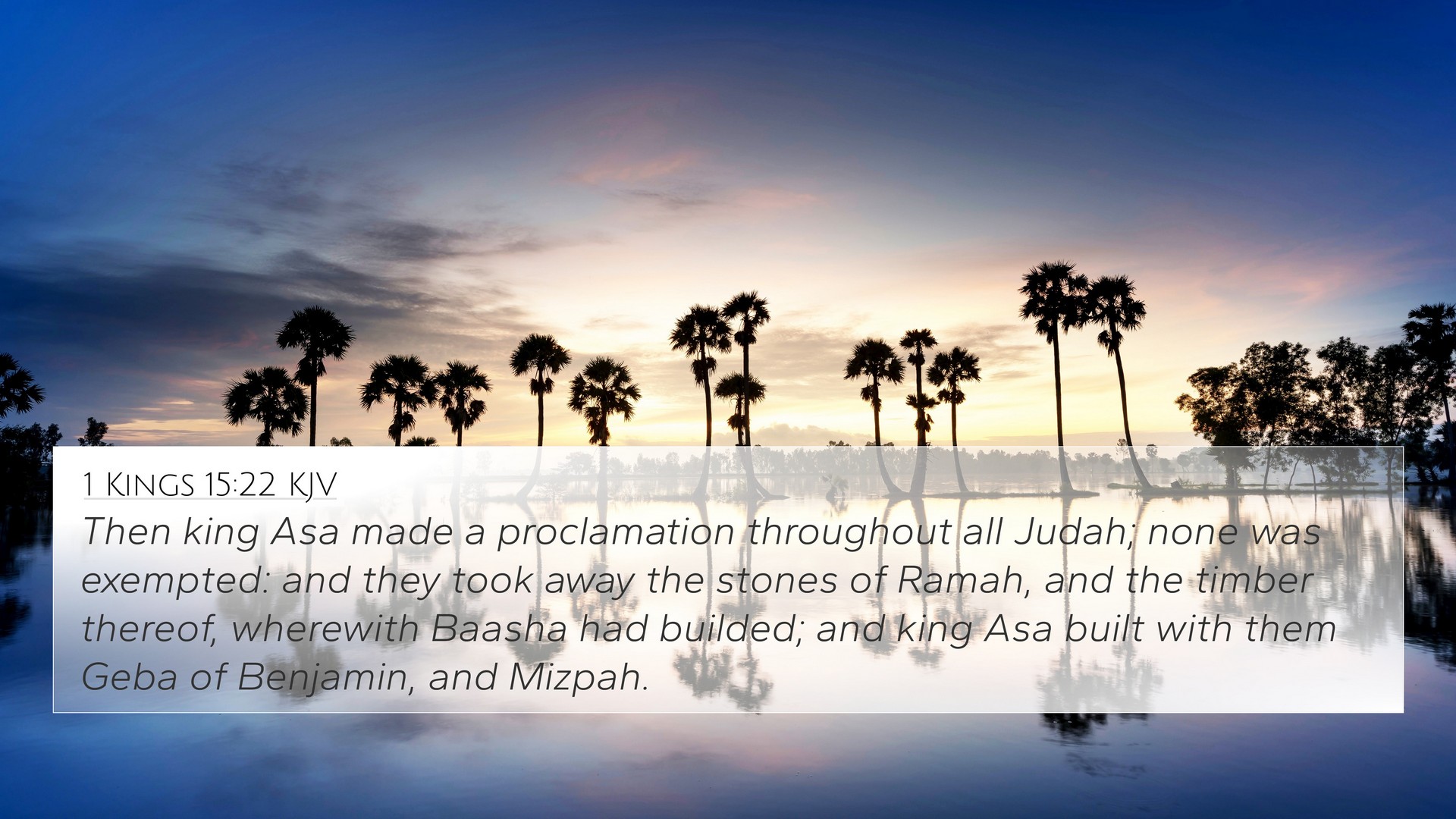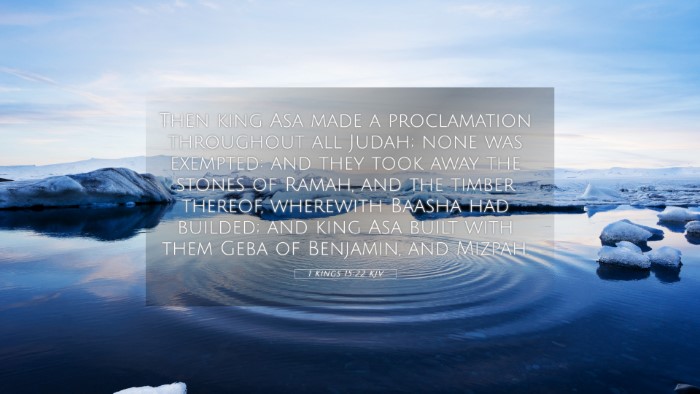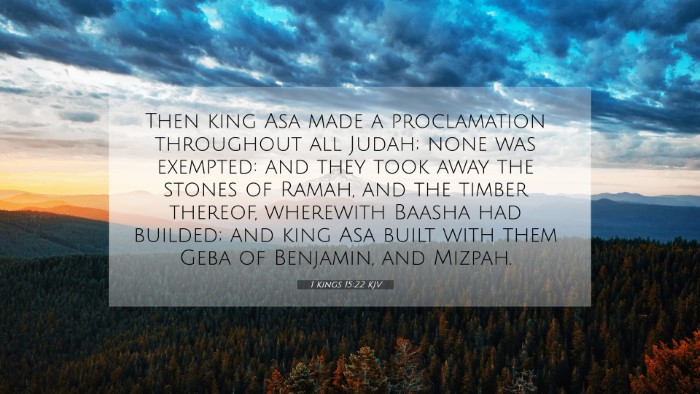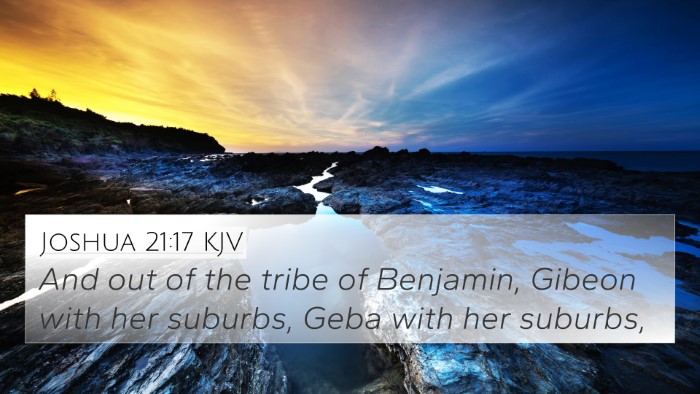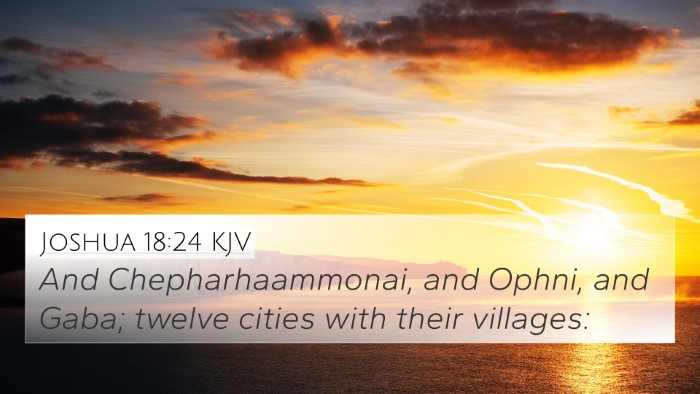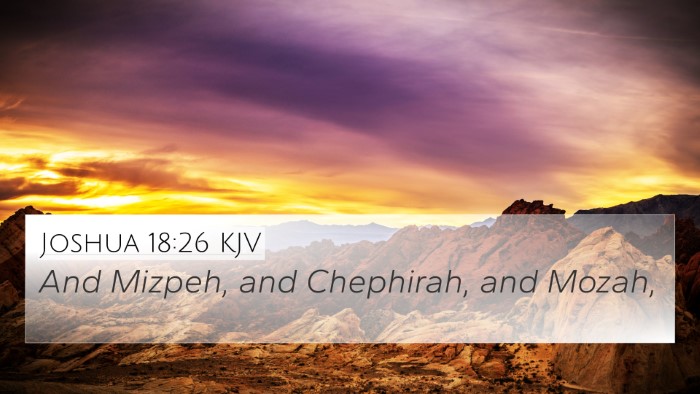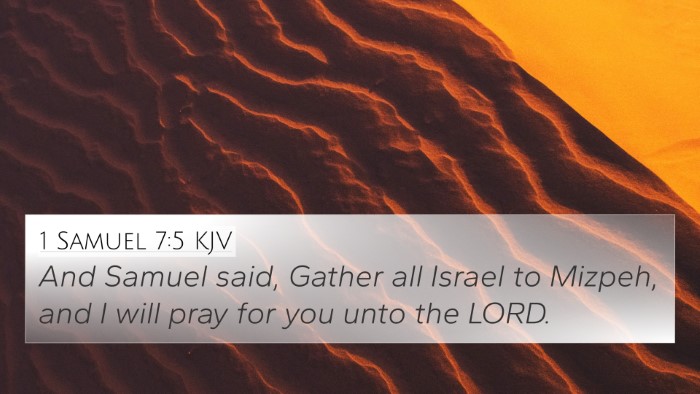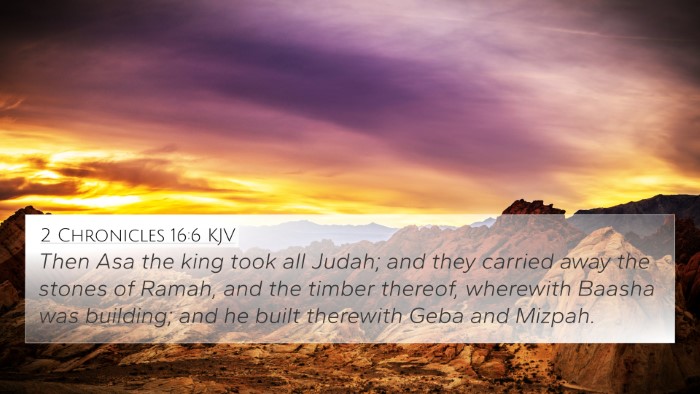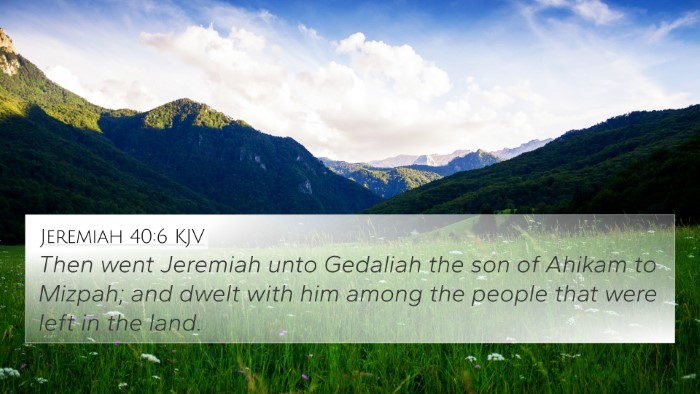Understanding 1 Kings 15:22
Verse: "But the people sacrificed still in the high places, yet Solomon burnt incense in the Lord's house." (1 Kings 15:22)
Summary of Meaning
The verse reflects a significant moment in the history of Israel, highlighting the duality of worship practices during King Solomon's reign. Despite Solomon's attempts to centralize worship in the temple he built, the people continued their practices in high places, indicating a struggle between true worship and the remnants of idolatry.
Commentary Insights
- Matthew Henry:
Henry emphasizes the tension between the people's actions and their king's intentions. This reflects the human tendency to cling to old habits despite religious reforms. He suggests that this behavior signifies a lack of genuine devotion among the people.
- Albert Barnes:
Barnes comments on the persistence of high-place worship despite the establishment of the temple in Jerusalem. He interprets this as a symbol of spiritual decline and a warning about mixed worship practices that could lead Israel away from true devotion to God.
- Adam Clarke:
Clarke highlights the potential for confusion in the worship of God when the people engaged in sacrificial practices outside of the divinely approved methods. He indicates that this fragmentation of worship could lead to moral and spiritual compromise.
Thematic Connections
This verse speaks to several themes within the broader narrative of the Bible, particularly regarding the correct forms of worship and the consequences of deviating from God's commands.
Biblical Cross-References
- Deuteronomy 12:1-4: Addresses the prohibition of worshiping in high places and emphasizes the importance of a centralized worship site.
- 1 Kings 3:2: Reflects on the high places being in use for worship prior to the temple's completion and discusses Solomon's early worship practices.
- 2 Kings 12:3: Indicates ongoing high place worship during the reign of King Joash, signifying a continued trend of divided loyalty to God.
- 2 Chronicles 33:17: Relays the restoration of temple worship, contrasting it with the high places where the people continued to offer sacrifices.
- Jeremiah 7:31: Warns against high places and outlines God's disapproval of such practices that were seen as acts of idolatry.
- Matthew 15:9: Jesus quotes Isaiah to emphasize that worship distracted by human traditions is not acceptable to God.
- John 4:24: Jesus teaches about true worship coming from spirits, indicating that the location of worship (i.e., high places vs. the temple) is secondary to the condition of the heart.
- Hebrews 10:19-22: Discusses the new covenant of worship where access to God does not rely on physical locations but rather through the sacrifice of Christ.
- Acts 17:24-25: Highlights that God does not dwell in man-made temples, thus elevating the discussion of true worship beyond physical structures.
- Revelation 21:22: Concludes with an eschatological vision of worship devoid of temple, emphasizing the direct relationship between the believer and God in the New Heaven.
Conclusion
1 Kings 15:22 serves as a poignant reminder about the challenges of maintaining pure worship amid societal customs and pressures. It invites readers to reflect on their worship practices and seek consistency with God's commands, making connections between the past and the present. Such comparisons are of great value for those engaging in comparative Bible verse analysis or seeking to understand connections between Bible verses, showcasing the importance of cross-referencing Biblical texts for a holistic understanding of scriptural teachings.
